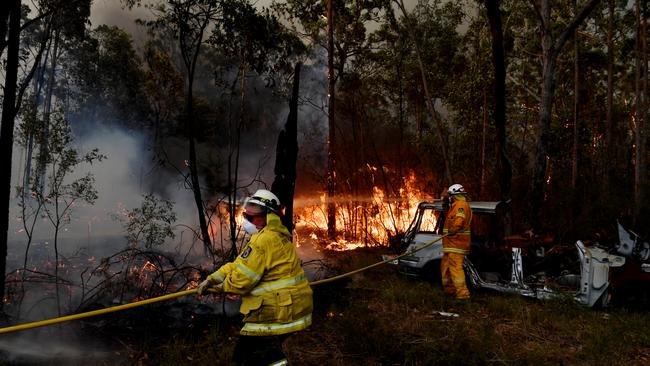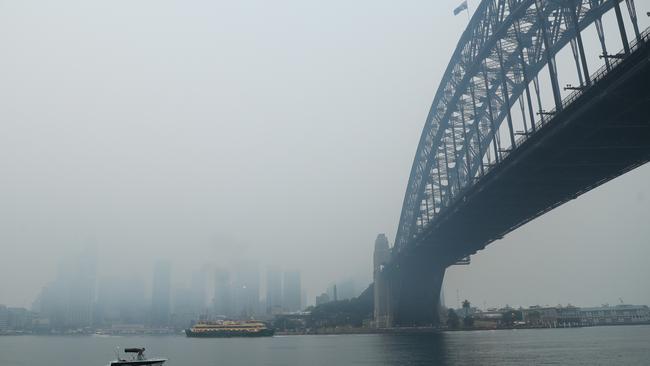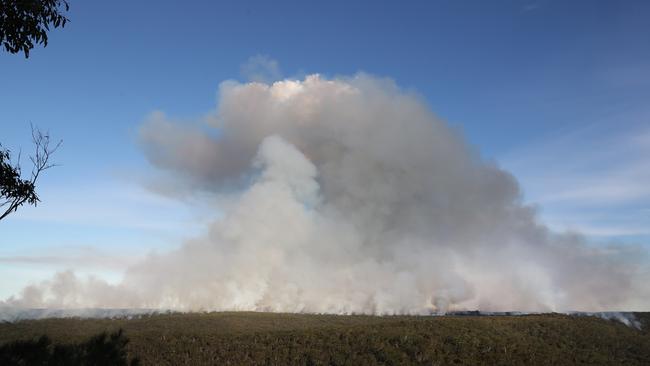Bushfire Royal Commission: Indigenous fire experts say cultural burning needs to play a part
Experts in Indigenous fire management have told the Royal Commission into Australia’s deadly black summer fire season that cultural burning should play a greater role in preventing fires.
NSW
Don't miss out on the headlines from NSW. Followed categories will be added to My News.
Experts in Indigenous fire management have told the Royal Commission into Australia’s deadly black summer fire season that cultural burning should play a greater role in preventing fires.
Indigenous experts in geology and land management told the commission that cultural burning brings together both modern technologies and ancient understandings of the land, but must be led by Indigenous people.
“The key ingredient of cultural burning is control by Aboriginal people … cultural land management is not a supplementary approach, it is not an add on or enhancement, it is not an approach that can simply be grafted onto the regions of non Indigenous land agencies,” Bhiamie Williamson, Euahlayi man and member of ACT Bushfire Council told the commission.


The ‘cool burning’ practice of cultural burning involves slow burning of grass which does not reach the canopy of trees, and does not completely burn an area, but rather creates a mosaic burn that reduces fuel loads while allowing some vegetation to remain.
Due to urbanisation, these exact practices in their traditional form may not be possible, however the royal commission heard a combination of this with mechanical fuel management is a viable fire prevention method.
What you get as a Daily Telegraph subscriber
“Australia as a country was transformed through the impacts of colonisation, and the land management practices of Indigenous groups pre colonisation may not in itself work now,” he said.
A submission to the Royal Commission from Indigenous cultural burning organisation Firesticks said the high intensity planned burning often done by non-Indigenous groups can harm the ecosystem.

MORE NEWS
Hundreds sign up for anti-vax ‘horror stories’ tour
Woman allegedly choked by attacker, hurt jumping to safety
Sydney street artist Anthony Lister hit with 11 new charges
High intensity fires scorch the vegetation, and can lead to more leaf and fine fuel accumulation after the back burning according to Firesticks.
“High intensity back burning often promotes the regeneration of inappropriate species, adding to the longer term fuel accumulation,” the submission said.
Geologist Mr Michael Fletcher told the Royal Commission that since British invasion, Australia has become more woody and densely forested with the introduction of the logging industry.
Before colonisation cultural burning typically focused on grassy fuels, and Mr Fletcher said this introduction of woody fuel has contributed to hotter fires.
“No doubt that climate change exacerbates fire potential … now there is more fuel in the modern forested region,” he said.
“Large parts of modern forested estate are carrying higher fuel loads today than they were during (the period of) Indigenous cultural burning.”

Tyronne Garstone of the Kimberley Land Council said decisions around cultural burning come as a “sixth sense” to Indigenous land managers.
Mr Garstone said Indigenous rangers will “speak to the country like it’s a relative” and gauge the best time to burn by walking the land.
“The principle of First Nations people is ‘country comes first’ … how landscapes are managed across Australia in the last 100 years or so since colonisation would have to be turned on its head,” Mr Garstone said.
Many witnesses at Thursday’s hearing, including Dr Timothy Neale of Deakin University, said lack of funding created a barrier to increasing cultural burning.
“While there are national statements affirming support for cultural land management in a general sense, there exists a policy gap across most states and territories today and beyond that, implementation and funding gaps, where there are policies or management plans,” Dr Neale said.
NSW RFS boss defends lack of back burning, June 17
NSW RFS Commissioner Rob Rogers told the royal commission on Wednesday that the need to do more hazard reduction burning must be balanced with the health needs of Sydneysiders.
Smoke from hazard reduction burning often settles in the Sydney basin, and can cause significant health concerns, Mr Rogers told the commission.
“It’s interesting, as a state we get accused of not doing enough hazard reduction, but when we do often … it smokes out Sydney,” Mr Rogers said.

Mr Rogers said the design of Sydney itself posed challenges to the way the RFS conducts hazard reduction burning.
“The smoke gets in (the Sydney basin) and gets trapped by an inversion layer. This provides some real health consequences, its not just people having a whinge because smoke gets in their washing,” he said.
“Indeed there has been an increase in hospital admissions when we’ve done hazard reduction. Indeed some premature deaths.”
Mr Rogers said it is easy to say more hazard reduction needs to be done, but urged the royal commission to address the consequences of that.

The RFS commissioner was quizzed by the royal commission on the handling of fire outbreaks in NSW national parks, with Chair Mark Binskin highlighting fires that “took off and were hard to manage”.
“The common views out there were that this was due to not as much hazard reduction in those areas, firebreaks not being appropriate, fire trails being blocked and the like,” Mr Binskin said.
Mr Rogers said lightning strikes in national parks played a major role in fires spreading.
“I don’t think from a NSW perspective that we’re saying that everything we do is great and there’s nothing more to do here I think there is more to do here and I think we have to learn lessons from this last season,” Mr Rogers said.
“Sometimes hazard reductions work really well, sometimes they didn’t seem to even pause the fire.”
